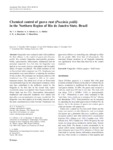Use este identificador para citar ou linkar para este item:
http://www.alice.cnptia.embrapa.br/alice/handle/doc/900972Registro completo de metadados
| Campo DC | Valor | Idioma |
|---|---|---|
| dc.contributor.author | MARTINS, M. V. V. | pt_BR |
| dc.contributor.author | SILVEIRA, S. F. | pt_BR |
| dc.contributor.author | MAFFIA, L. A. | pt_BR |
| dc.contributor.author | ROCABADO, J. M. A. | pt_BR |
| dc.contributor.author | MUSSI-DIAS, V. | pt_BR |
| dc.date.accessioned | 2011-09-20T11:11:11Z | pt_BR |
| dc.date.accessioned | 2011-09-20T11:11:11Z | pt_BR |
| dc.date.available | 2011-09-20T11:11:11Z | pt_BR |
| dc.date.available | 2011-09-20T11:11:11Z | pt_BR |
| dc.date.created | 2011-09-20 | pt_BR |
| dc.date.issued | 2011 | pt_BR |
| dc.identifier.citation | Australasian Plant Pathology, v. 40, n. 1, p. 48-54, 2011. | pt_BR |
| dc.identifier.uri | http://www.alice.cnptia.embrapa.br/alice/handle/doc/900972 | pt_BR |
| dc.description | Fungicides were evaluated under field conditions for their efficacy in the control of guava rust (Puccinia psidii); five systemic fungicides (azoxystrobin, pyraclostrobin, cyproconazole, tebuconazole, triadimenol) and the protectant mancozeb. In a first trial, the fungicides were applied at two-week intervals intercalated with bi-weekly sprays of copper oxychloride. The initial incidence of rust on flower buds before treatment was 47%. Triadimenol and azoxystrobin were most effective in reducing the incidence of rust on fruit. The minimum rust incidence achieved with triadimenol was 12% compared to 84% in the control treatment (water). The initial level of rust on flower buds was particularly high for the tebuconazole treatment, which may have contributed to the ineffective control by this fungicide in the first trial. In the second trial, copper oxychloride sprays were applied when disease incidence on flower buds was low (7%). Azoxystrobin, tebuconazole, triadimenol and mancozeb treatments were started nine days after a second application of copper oxychloride. The fungicides were then applied at bi-weekly intervals and at the same concentrations as in the first trial. Triadimenol was again most effective in controlling rust, although its effect did not greatly differ from that of tebuconazole. The maximum disease incidence in all fungicide treatments was significantly lower than that observed in the control treatment. | pt_BR |
| dc.language.iso | eng | eng |
| dc.rights | openAccess | eng |
| dc.subject | Yield losses | pt_BR |
| dc.title | Chemical control of guava rust (Puccinia psidii) in the Northern Region of Rio de Janeiro State, Brazil. | pt_BR |
| dc.type | Artigo de periódico | pt_BR |
| dc.date.updated | 2017-05-02T11:11:11Z | pt_BR |
| dc.subject.thesagro | Psidium Guajava | pt_BR |
| dc.subject.nalthesaurus | fungicides | pt_BR |
| riaa.ainfo.id | 900972 | pt_BR |
| riaa.ainfo.lastupdate | 2017-05-02 | pt_BR |
| dc.contributor.institution | MARLON VAGNER VALENTIM MARTINS, CNPAT; UENF; UFV. | pt_BR |
| Aparece nas coleções: | Artigo em periódico indexado (CNPAT)  | |
Arquivos associados a este item:
| Arquivo | Descrição | Tamanho | Formato | |
|---|---|---|---|---|
| AB111003.pdf | 357,87 kB | Adobe PDF |  Visualizar/Abrir |









